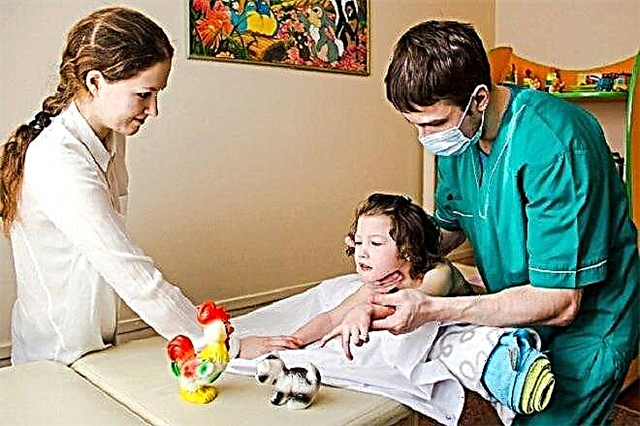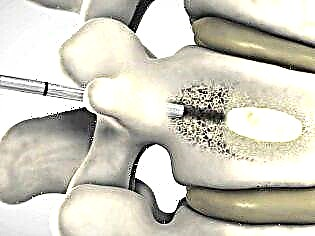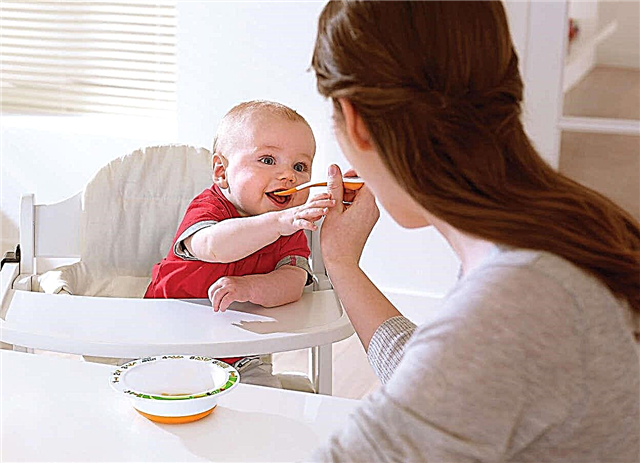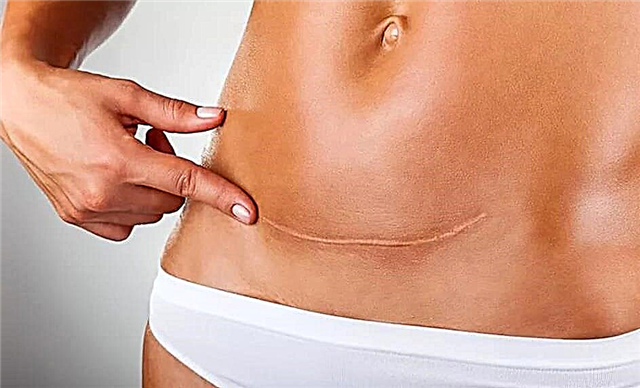
Compression fractures of the spine are less common in children than in adults. Among all back injuries, this lesion accounts for about 2% of cases. But each of these cases requires careful diagnosis, proper treatment, and rather lengthy rehabilitation. Therefore, parents should know what the symptoms of trauma are, how to provide emergency first aid, and what basic principles should be followed in the rehabilitation process. We will tell you more in this article.

About injury
Compression is the process of squeezing. A fracture is considered a violation of the integrity of the bone tissue. Thus, a compression fracture means a violation in which the fracture is combined with compression. When the spine is injured with compression, there is a violation of the structure of one or several vertebrae at once with an obligatory compressive effect, as a result of which the height of the vertebral bodies is disturbed.
A child can get such an injury anywhere - in a physical education lesson, on a playground, when falling off a bicycle. Usually, compression occurs as a result of a forced load on the longitudinal axis of the spine, a sharp flexion movement. Quite often, compression occurs as a result of flexion and impact at the same time.
It should be noted that compression injury of the spinal column does not always imply damage to only one vertebra. Several vertebrae may be broken at once.

A child can be injured without being injured as such. This becomes possible if he has osteoporosis or a tumor in the vertebral region, for example, a hemangioma inside the vertebral body. In this situation, it is not at all necessary to fall off the swing or jump from the roof of the garage. A sharp flexion movement will be enough for the vertebra to be damaged, and the vertebrae adjacent to it would squeeze it compression.
Compression fracture can occur with anyone; absolutely any part of the ridge can be injured. But most often, according to the observations of pediatric traumatologists, children break the lower thoracic vertebrae and the upper - the lumbar.
The structural feature of children's vertebrae is that their height is more perfect, shock absorption is better than the height in adults, and therefore compression cases of ridge fractures in childhood are somewhat less common. But the injury is one of the dangerous, and therefore requires a special attitude from both doctors and the parents of the child.


The danger of this injury is the risk of disability. Inside the spinal column is the spinal cord, numerous nerve endings that are responsible for the work of internal organs.
If nerves and spinal cord are pinched during the compress, the child may be paralyzed. But there is good news: the bone tissue of children is more elastic, it recovers faster, and therefore the chances of successful rehabilitation if an injury happened in childhood is much higher than with a similar injury, but in an adult.

How is it going?
Knowing what a compression injury looks like, as well as the essence of the processes at this moment in the spine, one can easily imagine what events could precede the injury. Most often, children get a compression fracture when landing on straight, extended legs. Some practice such jumping from the couch to the floor, and some from the roof of the garage in the yard. Height, of course, matters, but in fact, both of them risk serious injury and unpleasant consequences. Jumping on straight legs is often performed by schoolchildren in physical education lessons, since when performing a long jump, most children who are far from sports violate the technique of performing the exercise, and physical education teachers do not always follow this.
Fracture of a vertebra with compression is often a consequence of falling on the bottom. It is important to understand that landing on the buttocks from a height of their own height is not as dangerous as falling from a greater height, for example, from a moving swing.
If a child falls, usually one or two vertebrae are affected, the injury is isolated. If an injury is received upon impact after a jump from a great height, in an accident, then it is most often combined, accompanied by damage to the abdominal cavity, brain, limbs.
Types of vertebral compression
To determine the type of injury, the exact location of the fracture is of prime importance, on this basis, several types of compression fractures are distinguished:
- cervical;
- chest:
- lumbar;
- sacral;
- coccygeal.

Fractures with compression are most rare among toddlers and adolescents in the neck and coccyx. But injuries of the thoracic and lumbar spine are common. Depending on the degree of compression and decrease in the height of the vertebra, the following types of injury are distinguished:
- 1 degree compression injury - the height of the injured vertebra is reduced by less than one third;
- fracture with compression grade 2 - the height of the injured vertebra is reduced by less than half;
- injury with compression grade 3 - the height of the damaged vertebra is reduced by more than half.

The most severe is considered to be a grade 3 fracture, since it actually crushes the vertebral body.
Additionally, traumatologists determine the type of vertebral lesion. On this basis, explosive, impacted fractures and fractures with a split of the vertebra are distinguished.
Fractures resulting from trauma are called traumatic, and fractures that are a consequence of a tumor or other pathology in the spine are called pathological.

Symptoms
The main symptom of a compression fracture is sharp, severe pain. If a vertebra in the thoracic spine is broken, the child may additionally experience difficulty breathing at the time of injury. Some time later, the child may begin to complain of pain in the area of the injury, which subsides somewhat in the supine position, but invariably intensifies in the standing position, sitting, and also during movement.
With a severe fracture, the child may vomit, a severe headache, numbness of the limbs may appear. If the injured spine is examined, slight swelling may appear in the area of the fracture. Touching the injured vertebra causes a pain attack in the child, and the muscles in the vicinity of the injured vertebra are tense.
Often, the method of pressing the palm on the head (on the crown of the head) helps to determine the fracture of the spine. In this case, the pain in the vertebra should increase. But when determining a lesion in children, this method is contraindicated - additional compression can lead to increased compression and aggravation of the baby's condition.


Pathological fractures (due to a tumor or osteochondrosis) are rarely accompanied by severe symptoms. They often appear completely unnoticed. The child begins to complain of pain even when the height of the vertebra becomes greatly reduced, when there is a feeling of numbness in the fingers or feet.
When the roots are compressed, the first symptoms may not be pain in the vertebrae at all, but other disorders: hearing loss or vision loss (with an injury in the cervical spine), headaches, numbness of the extremities (with an injury in the lumbar spine), difficult deep breaths (with a lesion in the thoracic department).

First aid
The correct provision of first aid to a child with suspected spinal compression fracture is important, and each parent should at least in general terms imagine how to help a child. To begin with, it should be noted that with any fall (by the methods described above), with complaints of back pain, adults should first of all suspect compression. This is the case in which it is better to play it safe.
It is better not to touch the child, not to try to transport it to the hospital or emergency room on your own. Moving can lead to a change in the position of the injured vertebra and aggravation of the baby's condition. Try not to change your body position.
If it is not possible to leave the child in place before the arrival of the ambulance doctors, you should carefully, with outside help (by the arms and legs, with the support of a third person from the back), transfer the child to a hard surface and lay him on his back.


In no case should the victim be planted; in an upright position, the pressure on the vertebrae increases many times. If there is a suspicion of a fracture in the coccygeal area, the child should be laid on his stomach.
If there are drugs of the non-steroidal group of painkillers, then you can give the child an injection. For this, "Diclofenac", "Ketanov" in an age dose are suitable. But you should not give the child pain relievers in pills, since the swallowing reflex may be impaired, the child will choke. The cough, which occurs reflexively, can lead to additional displacement of the injured vertebrae.
You can transport a child to a medical facility only on a rigid stretcher. The child must be immobilized and fixed as rigidly as possible. If parents volunteer to help the doctors load the stretcher into the ambulance, remember that all movements must be very careful and smooth.

Treatment
The injury is initially treated in a hospital setting. The child will be on a hard "shield" - a bed for 6 weeks. He will be injected with painkillers, and will also be shown a special set of exercise therapy exercises in order to strengthen the muscles.
After a month and a half, the doctor allows a special massage and a visit to the physiotherapy room. Electrophoresis and calcium sessions are especially useful at this stage of rehabilitation.
For two months thereafter, the child must wear a special orthopedic fixation corset. In the event of an uncomplicated compression fracture, he will be able to return to school not earlier than six months later. Full recovery will take 2-3 years.


For complicated fractures, surgical treatment is indicated. Children undergo two types of operations - vertebroplasty and kyphoplasty. Both types of interventions are classified as high-tech types of medical care.
In the first case, doctors make a small incision and a special bone cement is injected into the vertebral body, which hardens and does not allow the vertebra to collapse. With kypholastic, the shape of the vertebra is preliminarily corrected, after which the same bone fixing cement is injected. Each type of surgical intervention has its own indications and contraindications.


If the roots and nerve endings are trapped as a result of an injury, open spine surgery is usually performed, during which surgeons manually release the roots. To stabilize a movable broken vertebra, various metal structures can be used - screws, rods, etc., the exact type of device is determined by the doctor depending on the nature of the injury.
Completely destroyed vertebrae are replaced with bone grafts and prostheses. The postoperative period and rehabilitation after surgical treatment of a compression fracture are rather difficult and long. They will require patience and hard work from relatives and doctors. For recovery, massage, physiotherapy, as well as systematic exercise therapy classes are used strictly under the supervision of a specialist in the field of physiotherapy exercises and restorative gymnastics.

Komarovsky about injury
The well-known pediatrician Yevgeny Komarovsky claims that parents should not engage in "amateur performance" and apply compresses, bandages to the child and test traditional medicine on them in the course of treatment and during the recovery period after the baby receives a compression injury of the spine. Another extreme, which Komarovsky warns against, is excessive physical inactivity during rehabilitation. Parents should understand that movement will only benefit the child, and recovery will be faster.
The pediatrician calls swimming, walking in the fresh air, exercise on a stationary bike useful, unless, of course, the attending doctor does not object to this kind of physical activity.


Komarovsky considers the rules of competent first aid to be almost basic, capable of influencing the entire process of treatment and recovery. He recommends remembering a few important rules that will come in handy after getting injured before the doctors arrive:
- peace;
- lack of movement;
- cold;
- pain reliever from a home medicine cabinet.
Komarovsky strongly advises parents not to try to probe or correct anything on their own. In addition to the fact that this will give the child severe pain, this can significantly complicate the task for doctors - if there was no clamping of the roots, it is often organized by parents with their inept and unreasonable actions.
In the case of pathological fractures that do not differ in acute symptoms, the best thing parents can do is not to avoid an annual medical examination. It is she who will help in time to identify this type of injury, if it occurs.

Forecasts
Since children's bones recover much faster than adults, an uncomplicated first-degree fracture usually has a very favorable prognosis - the integrity of the vertebrae is restored without significant consequences for the child's health.
Compression fractures of the second or third degree often have long-term consequences - episodic pains may persist, and the likelihood of intervertebral hernias increases, which will require a separate laborious surgical intervention.
Predictions for a complicated third-degree fracture are considered less favorable, when a crushed vertebra has to be replaced. Often after that, the child is supposed to be diagnosed with disability, which will significantly limit his physical health and opportunities in choosing a future profession.
Timely treatment and proper rehabilitation significantly increase the chances that performance will recover in full. Following the doctor's recommendations will allow parents to get their child back on their feet faster.

Dr. Komarovsky will tell you how to have a healthy back in the next video.



